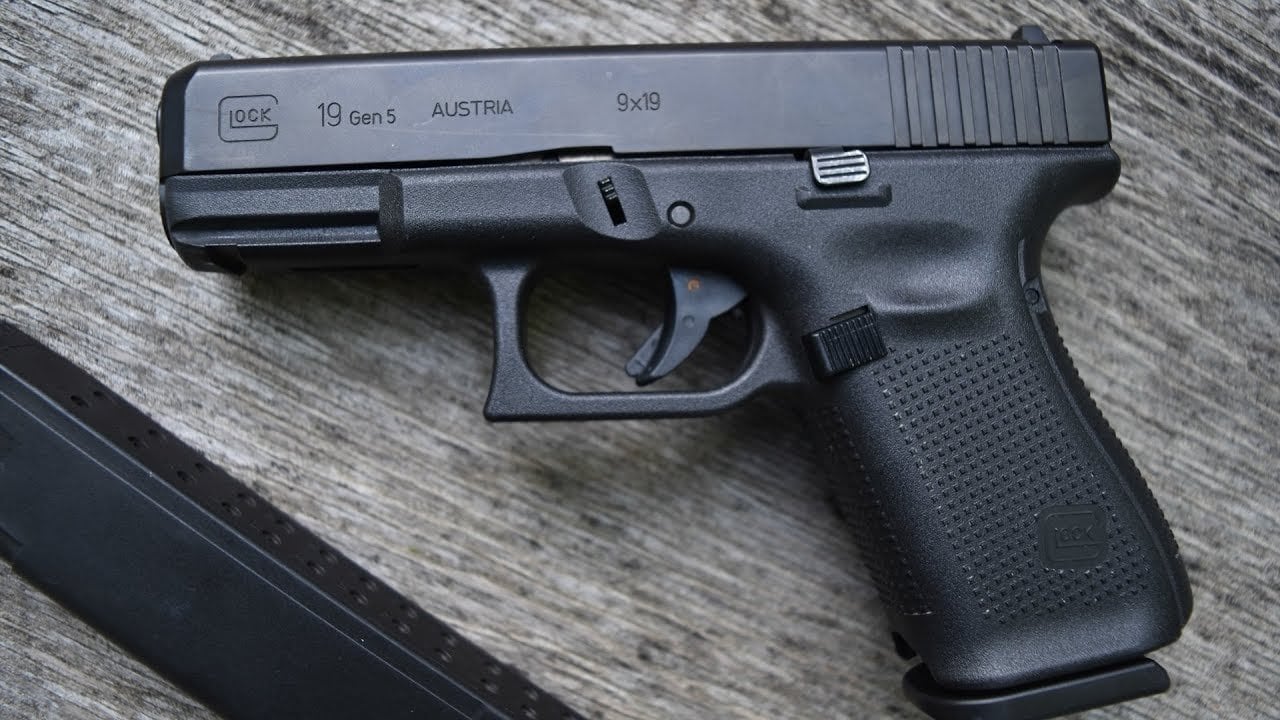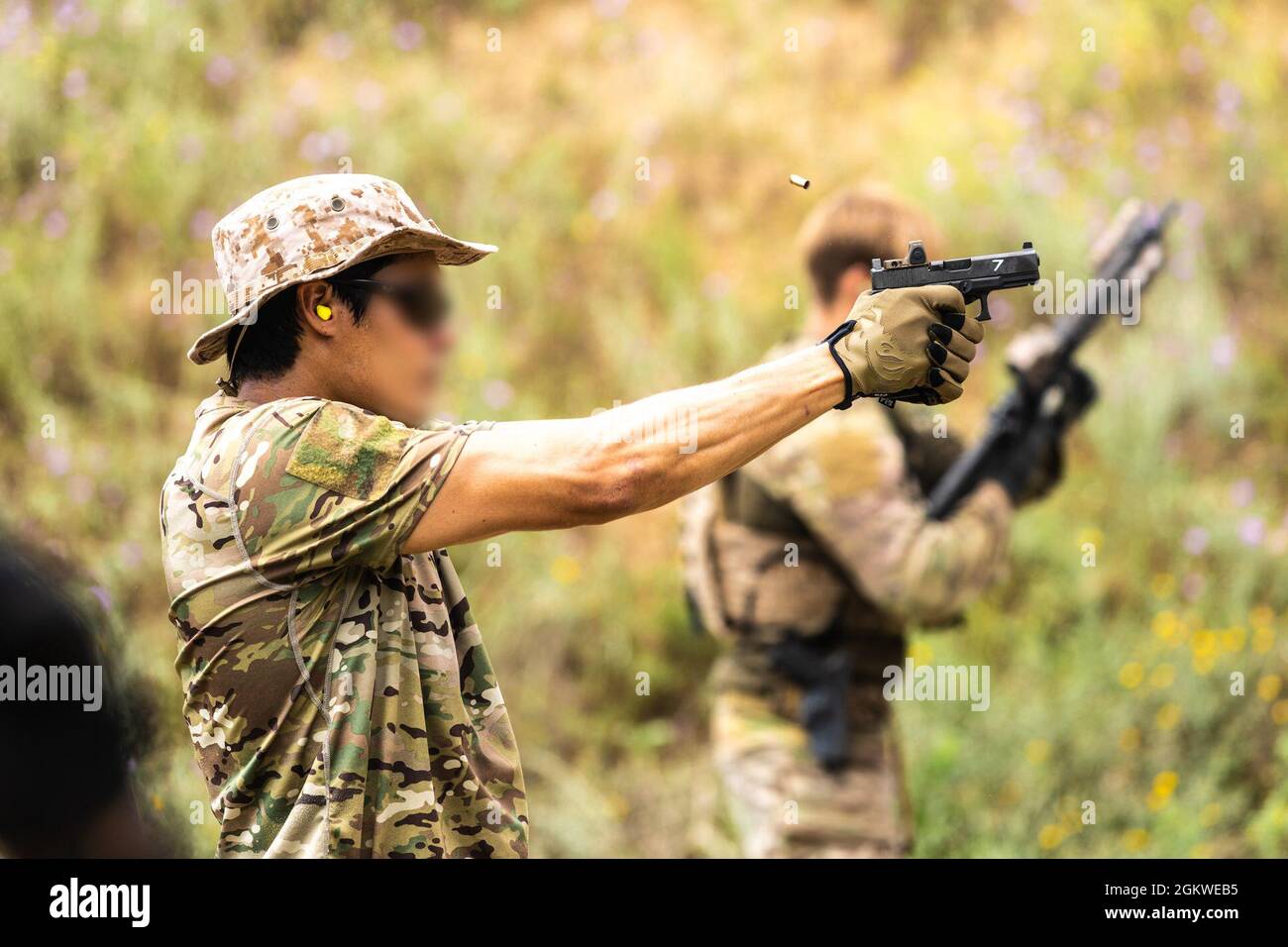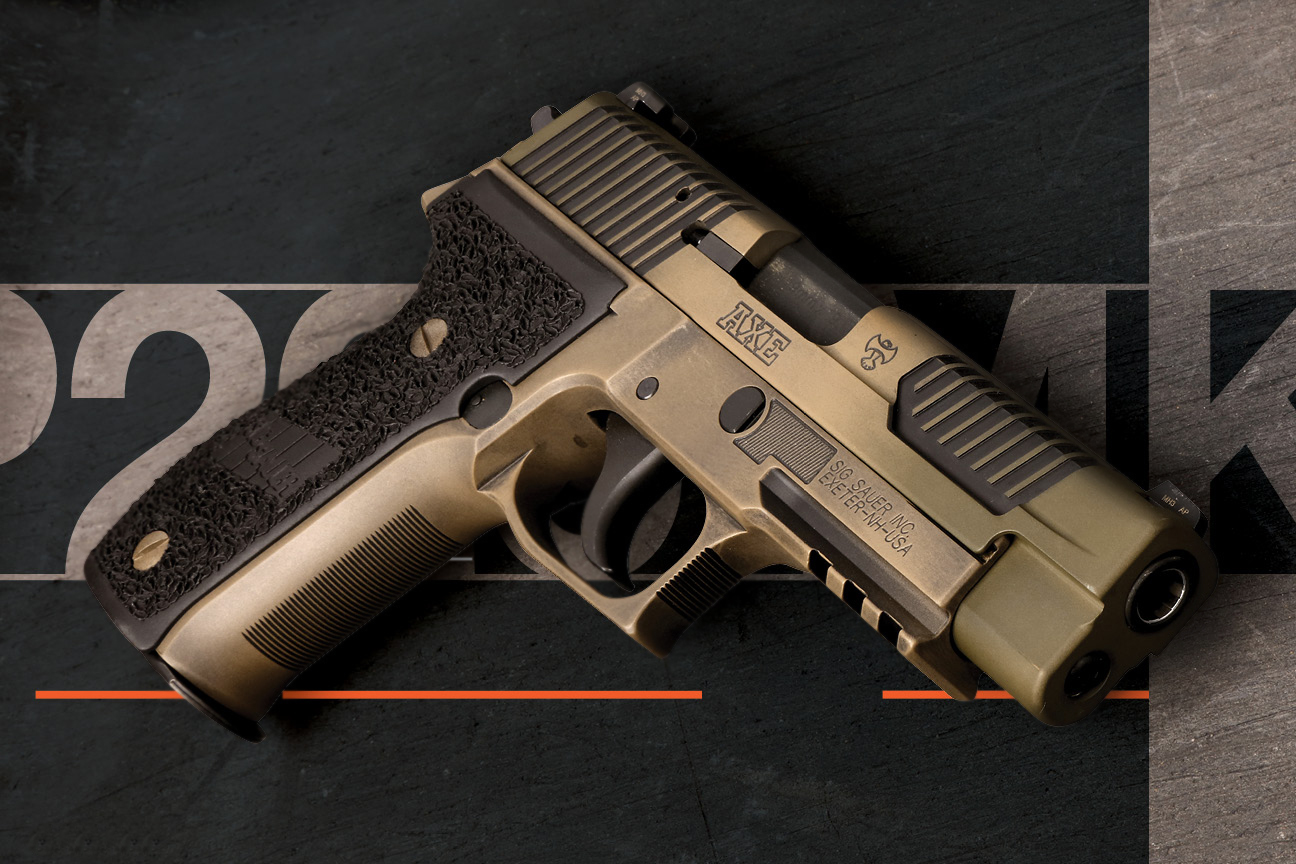Navy Seal Pistol - Here's what to remember: The Mk. 25 has been a constant companion of the SEALs for the past three decades, including operations in Panama, Somalia, Haiti, the Balkans, Iraq, Afghanistan, Syria and other countries.
For three decades, the United States Navy's Sea Air Land (SEAL) special forces teams have relied on a gun alongside the rest of the United States military. While the Army, Marine Corps, and even the rest of the Navy carried the Beretta M9 pistol, the Navy SEALs carried a completely different weapon: the Sig Sauer P226.
Navy Seal Pistol

In the mid-1980s, the US military finally abandoned the M1911A1 .45 caliber pistol for a new pistol, the Beretta 92FS. Known as the M9 in US service, the Beretta was presented as a modern, safer and easier to shoot pistol with twice the ammunition capacity of the .45. The M9 has been adopted by all branches of the military, including the US Navy's elite SEAL Team Six. Team Six operators were trained for counter-terrorism missions and honed their close-range marksmanship, and in the 1980s it was rumored that Team Six's small arms budget exceeded that of the entire United States Marine Corps.
The P226 Handgun Is The Navy Seal's Favorite Gun For 1 Reason
All this caused the SEALs assigned to Team Six to put a lot of wear and tear on their pistols. In 1986, a SEAL demonstrating the Beretta to a visiting VIP was injured when the rear of the gun's slide broke, causing the slide to slam into the sailor's face. Although the injury was relatively minor and only a few pistols showed signs of bursting (a shortcoming that Beretta later corrected), the SEALs wanted a new pistol.
According to small arms historian Kevin Dockery, the SEALs tested the then-new Glock 17 pistol as a possible replacement. The Glock can be completely submerged in salt water. Surprisingly, the Navy concluded that the Glock was "considerably less reliable than the Beretta M9 in other respects".
Instead, the SEALs chose the P226 pistol. Developed by German-Swiss gunmaker Sig Sauer for competition to replace the M1911A1, the P226 was second only to the M9. The P226 was a variant of the company's popular P220, the official handgun of militaries around the world, from Switzerland (of course) to Japan. The P226 was immediately subjected to extensive environmental testing that simulated the operational environment of SEAL units, including submersion in sand, salt water, and mud. Perhaps wary of hiring another pistol with cracking problems, the SEALs subjected five test pistols to an endurance test of thirty thousand rounds each.
Sig Sauer had a lot of history. Schweizerische Industrie Gesellschaft (SIG), a Swiss industrial company that manufactures everything from wagons to pistols, was founded in 1853 in Neuhausen am Rheinfall, Switzerland, and was the mastermind behind the SIG P210 pistol. In 1976, SIG's firearms division partnered with Sauer & Sohn. At the time, Sauer & Sohn was Germany's oldest firearms manufacturer, founded in 1751, and traditionally emphasized sporting weapons.
Tailored Arms Ar15 Navy Seal Museum Special Spartan Rifle
The P226 in SEAL service became known as the Mk. 25. The pistol was a derivative of the original Sig P10, a very successful weapon in its own right, but updated with modern features. Like the 210, the 226 used the Petter-Browning locking system, which revamped John Browning's locking system in 1911 with improvements made by Swiss engineer Charles Petter, including the removal of the barrel bushing and the use of a full-length guide bar. The P226's main competitor, the Glock 17, also uses the Petter-Browning breech system, as do many contemporary handguns.
The SEALs placed an initial request for eight hundred P226s and the first pistols, officially designated Mk. 25, were shipped in 1989. The MK. 25 has a 4.4-inch barrel, nearly half an inch shorter than the Beretta M9, and the pistol is chambered for a nine-millimeter Parabellum. The frame is made of steel alloy, while the slide is made of stainless steel for extra strength, and the door is finished in Nitron for corrosion resistance. The gun weighs two ounces two pounds with a loaded magazine.
The MK. 25 can be operated as a single-action or double-action pistol and has a trigger to safely release the hammer without firing a bullet. Unlike the Beretta, there is no manual safety; all mechanical safeties are incorporated into the fire control system to prevent accidental discharges. The pistol magazine holds fifteen cartridges in a double stack configuration. While this increases the amount of firepower the Sig can put out, it also widens the pistol grip, making it less ergonomic for those with smaller hands.

The MK. 25 has been a constant companion of the SEALs for the past three decades, including operations in Panama, Somalia, Haiti, the Balkans, Iraq, Afghanistan, Syria and other countries. In late 2015, the Naval Special Warfare Command made the decision to add the Glock 19, the compact nine-millimeter version of the Glock series of handguns, to the SEALs' arsenal of weapons. While Mk. 25 will follow, the SEALs will gradually replace them with newer Glocks. Sig Sauer has been arming US naval commandos for well over a quarter of a century and now the torch is being passed to Glock. The MK-3 "becomes less effective after 24 rounds are fired," notes an official Navy handbook. "Suppressor insertion restores the suppressor."
The U.s. Navy Seals Use This Super Gun
Navy SEALs are known for their exotic weapons, from machine guns to grenade launchers... and several iconic silent weapons.
The Navy assembled the Sea Air Lands teams in 1962 and quickly dispatched them to Vietnam to search for the enemy and work with local forces. Naval operators realized that a suppressed gun would be ideal for many of their more covert missions.
"The value ... of suppressed weapons was noticed before the teams were deployed to combat operations in Vietnam," noted SEAL historian Kevin Dockery in his book Special Warfare Special Weapons. "But very few such weapons were available in the early years of the war."
At the time, the Pentagon viewed silencers as a highly specialized tool for individual operations. During World War II, intelligence organizations such as the Office of Strategic Services, the forerunner of the Central Intelligence Agency, were much larger clients.
Special Forces Handgun Concepts
Still, the technology was not new. Hiram Maxim, known for the Maxim submachine gun, is often credited with inventing the first firearm silencer and patenting it in 1909.
The sound of a gun being fired comes from gases escaping behind the bullet, like a car screeching or opening a bottle of champagne. The devices, which Maxim described as a "silencer," work primarily by relocating all those fumes.
The OSS and its British counterparts ordered a variety of suppressed pistols, submachine guns and rifles during the war, according to a contemporary US Army study. And these weapons remained in both military and CIA arsenals long after the end of the conflict.

The close relationship between special operations units and the CIA from the beginning allowed the SEALs to get their hands on some of these weapons. But the firearms were aging... and never intended for regular combat use.
The Navy Seal's Mk 23 Pistol Is A Truly Bizarre Weapon
For example, the CIA was particularly fond of a "cleaner" type muffler. This type of suppressor contains a rubber or soft plastic disc to seal the gases after the bullets pass through.
But these "wipes wore out quickly under the stress of shooting," explains Dockery. "It was intended that the operator would use the weapon for a mission and then remove the suppressor."
The SEALs needed a weapon that could be used in the field on a daily basis. So the Navy got to work developing a replacement.
In 1967, the naval commandos received the first of the new MK-3 "noise suppressors". Silencers were installed on specially modified nine-millimeter Smith & Wesson Model 39 pistols.
How The Navy Seals Use Silencers On Their Weapons
A suppressor A large spring and O-ring held a separate insert securely in a head tube.
When the wipes were removed, gases could still expand in this outer layer. Individual commandos can unscrew the whole setup and install a new insert in the base.
The guns themselves, called MK-22s, also had a bar to prevent the slide from moving back and forth. This feature would make the weapon a one-time affair, but would also eliminate the noise of changing parts.

To top it off, elite sailors were given unique subsonic ammunition that wouldn't make the creaking sound that results from breaking the sound barrier. The pistol quickly became a popular and iconic addition to the SEAL arsenal.
The Reading File: Excerpts From Interesting Articles
In Vietnam, commandos fired their guns to take down lone guards or, more commonly, kill animals that might betray them. The SEALs called the weapons "silence puppies"... for obvious reasons.
"Very rarely have I [sic] used the hush puppy against a person — dogs and ducks raising the alarm were a much more common target," Dockery tells an unnamed SEAL in his book.
Naval commandos quieted their weapons after fighting in Southeast Asia ended. But the teams were clearly tired of expendable cleaning suppressors.
In the 1980s, the Navy had purchased a number of Heckler & Koch Model P9S pistols along with new silencers to replace the older combination. A company called Qual-A-Tech made the suppressors, which collected propellants in fixed chambers, according to a separate Air Force test report.
Navy Seal Devgru
At the same time, the Pentagon was looking for a new pistol to replace the decades-old M1911. The SEALs and the fledgling Special Operations Command were less than thrilled with the resulting nine-millimeter Beretta weapon.
SOCOM asked private companies to come up with what it called an "offensive pistol weapon system." The weapon would fire "hotter" ammunition - loaded with more or more powerful gunpowder - than traditional military bullets.
Companies also had to provide suppressors

Navy seal enlistment, navy seal foundation, luminox navy seal 3500, us navy seal salary, navy seal foundation store, navy seal pst, navy seal recruiting, navy seal requirements, luminox navy seal blackout, navy seal program, becoming a navy seal, navy seal application
0 Comments